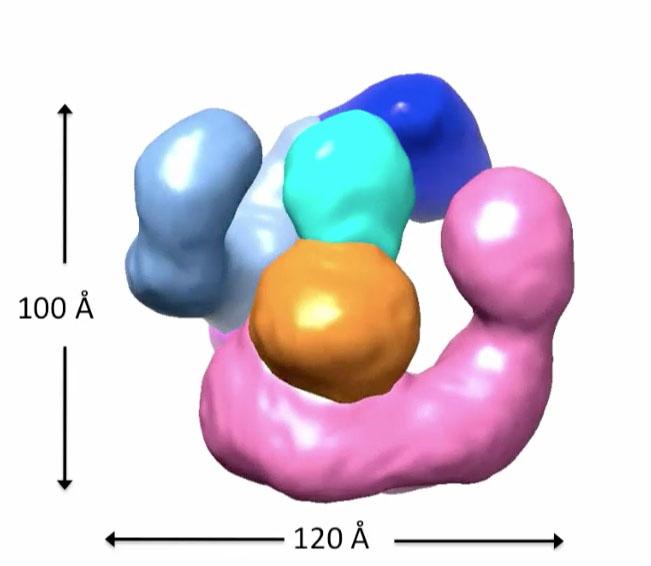
UC Davis researchers show how four proteins come together to make the machine that assembles tubulin, the building block of microtubules. When they think about how cells put together the molecules that make life work, biologists have tended to think of assembly lines: Add A to B, tack on C, and so on. But the reality might be more like a molecular version of a 3-D printer, where a single mechanism assembles the molecule in one go.
Take, for example, tubulin. Building from two subunits, alpha and beta tubulin, this protein assembles into microtubules that play a vital role inside cells - giving structure, pushing or pulling other things around, or providing a track on which other molecules can pull themselves along.
Perhaps most crucially, when cells divide, microtubules form the spindle structure that first aligns the chromosomes in the middle of the cell then pulls them apart, so that each new cell gets one chromosome from each pair. This process often goes wrong in cancer cells, resulting in chromosomal instability.
Jawdat Al-Bassam at the UC Davis Department of Molecular and Cellular Biology and colleagues have now taken a close look at the proteins that assemble tubulin, and found that they comprise a single machine, not a stepped pathway as previously thought. The work is published online in the journal eLife.
The basic unit of tubulin is a dimer of alpha- and beta- tubulin. This dimer gives microtubules directionality, which is key to many of their other properties, such as being able to assemble or disassemble from either end, and allowing motor proteins to walk along them in a specific direction. This unique organization of tubulin is preserved among all living plant and animal cells, because it is essential for way in which microtubules assemble, Al-Bassam said.
Assembling alpha-beta tubulin dimers involves six known genes, Al-Bassam said. The conventional model arranged these proteins as an assembly line starting with alpha and beta subunits and ending with the finished alpha-beta dimer.
"What we showed instead is that largest four of these six genes form a machine that functions as a single entity," Al-Bassam said. They also discovered that a newly discovered subunit, a GTP-ase enzyme of a type usually thought to act as a switch, in fact powers the whole machine using chemical energy. The energy maybe required to build stable alpha and beta tubulin assembly.
"We didn't expect it ourselves," Al-Bassam said.
The researchers worked with the tubulin system from yeast, but the human genes are very similar.
They first tried to reconstitute the system by working with one or two genes at a time, but this "assembly line" approach just didn't work. Then they put all six genes into a single piece of DNA, so that they would all be transcribed together - and found that they could reconstitute the "3-D printer" that assemble tubulin dimers.
Even small defects in the genes that assemble tubulin are associated with serious developmental disorders, such as Kenny-Caffey syndrome and Giant Axonal Neuropathy. Cancer cells often show an inability to separate chromosomes properly during cell division, due to problems with microtubules.
Al-Bassam said the results open up new ways of thinking about tubulin, tubulin-related disorders and molecular biology in general. Understanding this system may provide a new strategy to control microtubules, particularly in cells that are dividing out of control such as in certain cancers.
"It turns out there are lots of things we can think about as these kinds of machines," he said. "Most important functions in cells are carried by molecules that work in groups."
Source: University of California - Davis
 Print Article
Print Article Mail to a Friend
Mail to a Friend
